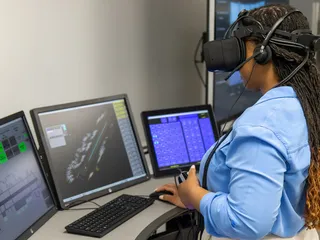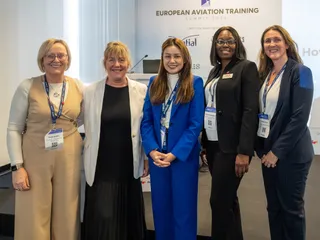Air Force Explores Biometrics in ATC Training
Contact Our Team
For more information about how Halldale can add value to your marketing and promotional campaigns or to discuss event exhibitor and sponsorship opportunities, contact our team to find out more
The Americas -
holly.foster@halldale.com
Rest of World -
jeremy@halldale.com

The U.S. Air Force has awarded UFA, Inc. a Small Business Technology Transfer (STTR) Phase II contract valued at $1,799,837 for a project titled “Revolutionizing Air Traffic Controller Readiness: Mixed Reality and Biometric-Driven Training for Tactical Air Dominance.”
The initiative is designed to shorten training cycles and reduce washout rates by deploying an adaptive simulation system that personalizes air traffic control (ATC) training in real time. Using biometric sensors that measure factors such as stress levels and eye movement, the system integrates these data with performance metrics. An adaptation engine then adjusts training scenarios dynamically, providing additional support when trainees are overwhelmed or adding complexity when they are under-challenged.
The approach aims to address high attrition rates, cognitive overload, stress management, and inefficiencies that hinder ATC training. These challenges have created staffing shortages within both the U.S. Air Force and civil aviation organizations worldwide.
The award follows previous Department of the Air Force investments in innovative technologies through the Open Topic SBIR/STTR program launched in 2018. AFWERX and the Air Force Research Laboratory have since worked to streamline proposal and award processes for small businesses.
David Wolff, CEO of UFA, stated: “The shortage of air traffic controllers is a critical challenge for both national security and civil aviation. This project isn't just about integrating new technology like eye-tracking; it's about fundamentally redesigning the training process. By creating a system that intelligently adapts to each individual trainee, we can reduce washouts, accelerate proficiency, and ensure our skies are managed by the best-prepared controllers in the world. We are proud to partner with the U.S. Air Force on this transformative effort.”


